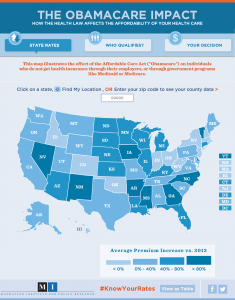Federal Courts Zig and Zag on Obamacare Tax Credits
 Obamacare opponents’ hearts rose this morning, as a three-judge panel of the DC Circuit Court of Appeals struck down the power of federal Obamacare exchanges to pay out tax credits to health insurers who sign up beneficiaries for subsidized Obamacare coverage. Because most states declined to set up their own Obamacare health insurance exchanges, subsidies to insurers would have come to a screaming halt in most of the country. Opponents have long hoped that such a decision would force the Administration back to the negotiating table with Congress.
Obamacare opponents’ hearts rose this morning, as a three-judge panel of the DC Circuit Court of Appeals struck down the power of federal Obamacare exchanges to pay out tax credits to health insurers who sign up beneficiaries for subsidized Obamacare coverage. Because most states declined to set up their own Obamacare health insurance exchanges, subsidies to insurers would have come to a screaming halt in most of the country. Opponents have long hoped that such a decision would force the Administration back to the negotiating table with Congress.
However, merely a couple of hours later, the 4th Circuit Court of Appeals in Richmond, VA upheld the Administration’s position: That federal exchanges have the same powers as state exchanges to pay out subsidies to health insurers. The Administration plans to appeal the DC panel’s decision to the entire DC Circuit, en banc (i.e. all eleven judges).










